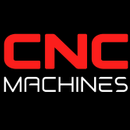What Is the Life Expectancy of a CNC Machine? Key Factors That Impact Longevity

What Is the Life Expectancy of a CNC Machine? Key Factors That Impact Longevity
When investing in a CNC machine—whether it’s a CNC mill, lathe, router, or EDM—one of the most important questions to ask is: What is the life expectancy of a CNC machine? The answer is nuanced and depends on several key variables including usage hours, maintenance practices (MP), work environment, type of work performed, materials being machined, and the machine's original build quality. In this guide, we’ll break down what impacts a CNC machine’s lifespan and how to extend it.
Average CNC Machine Life Expectancy
On average, a high-quality CNC machine can last between 15 to 30 years, with many reaching 60,000 to 100,000 spindle hours or more with proper care. However, some machines wear out in as little as 10 years due to heavy-duty use or lack of maintenance, while others remain productive for decades in light-duty environments.
Key Variables That Influence CNC Machine Longevity
1. Hours of Usage
CNC machines are often evaluated by spindle hours or power-on hours:
- Low Usage: Under 10,000 hours – often like new
- Moderate Usage: 10,000 to 40,000 hours – still productive
- Heavy Usage: 40,000+ hours – may require rebuilding or retrofitting
Continuous 24/7 operation, especially in industrial settings, puts significantly more stress on bearings, guideways, ball screws, and electronics.
2. Maintenance Practices (MP)
Routine preventive maintenance is arguably the biggest factor in maximizing machine life.
- Daily tasks: Lubrication, coolant checks, and chip removal
- Monthly tasks: Alignment checks, filter cleaning, hydraulic inspection
- Annual tasks: Ball screw backlash adjustment, spindle runout inspection, software updates
A neglected machine can suffer from premature wear and catastrophic failure.
3. Environment
Environmental factors drastically affect machine longevity:
- Clean, climate-controlled shops typically extend life
- Dirty, high-dust, or unregulated temperature environments lead to faster component wear, electrical issues, and corrosion
- Humidity and condensation can rust vital components and degrade wiring
4. Type of Work
The complexity and intensity of machining operations matter:
- Light-duty tasks (e.g., plastics, aluminum) are less taxing
- Heavy-duty tasks (e.g., steel, titanium, or hardened materials) increase stress on the spindle, motors, and tooling
Machines used for precise high-speed applications like aerospace often wear differently than those used for woodworking.
5. Material Being Cut
The hardness and abrasiveness of the material influences:
- Tool wear
- Spindle load
- Coolant requirements
For example, cutting graphite is extremely abrasive, while machining soft aluminum produces less wear.
6. Machine Build Quality
Premium brands like Haas, Mazak, Okuma, and DMG Mori typically use higher-grade materials and components, meaning longer lifespans. Lower-tier or hobbyist machines may last only a few years under industrial use.
7. Operator Skill
Experienced machinists know how to reduce tool chatter, avoid crashes, and optimize feeds and speeds—all of which minimize wear and tear. Poor programming or improper setups can dramatically reduce a machine’s lifespan.
8. Upgrades and Retrofits
Older machines can gain new life through:
- CNC control upgrades
- Spindle rebuilds
- Servo motor replacements
- Ball screw replacements
Some machines are kept running for 40+ years this way, especially in job shops or toolrooms.
How to Extend the Life of a CNC Machine
- Implement a preventative maintenance schedule
- Keep the shop environment clean and temperature-stable
- Train operators on proper setup and programming
- Use high-quality tooling and fluids
- Monitor and analyze machine data using CNC monitoring systems
- Inspect machines regularly for early signs of wear
Final Thoughts
CNC machines are built to be workhorses, but like any precision instrument, they require care and consideration. A well-maintained machine in a clean environment, used by skilled operators, can deliver decades of reliable performance. Conversely, a poorly maintained machine—even a new one—can quickly degrade and become a liability.
Whether you're buying used CNC machines or investing in a brand new unit, knowing what influences their life expectancy helps you make a smarter, long-term decision. And if you're buying or selling CNC equipment, platforms like CNCMachines.com can help you assess a machine’s value based on its usage history and condition.
SEO Keywords: CNC machine lifespan, CNC life expectancy, used CNC machine hours, extend CNC machine life, how long do CNC machines last, CNC maintenance, CNC wear and tear, factors affecting CNC longevity, buy used CNC machine, CNC spindle hours


